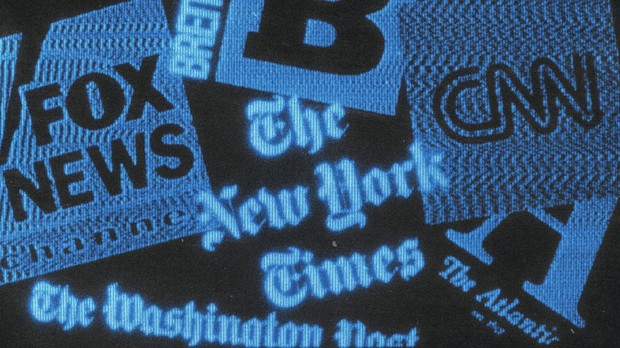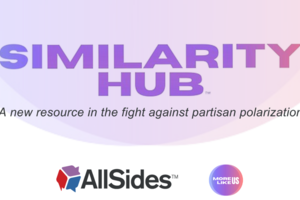American Media Leans More Democratic Overall: The Economist Analysis

At the end of 2023, The Economist (Lean Left) conducted a study in which it looked at the partisan language used in TV and written journalism to determine if there was a slant toward any political party. It found that “there is indeed an affinity between the media and the left, because journalists tend to prefer the language used by Democratic lawmakers.”
When The Economist compared its findings to AllSides Media Bias Ratings™, it found a close match, stating, “conservative outlets like Breitbart and Fox News used disproportionately Republican terms, whereas left-leaning ones such as Vox and Buzzfeed published mainly Democratic ones.”
The Economist created a partisan dictionary consisting of 428 phrases that distinguish partisanship in speeches, such as “illegal alien” or “reproductive care.” The study cross referenced 242,000 news articles and 397,000 transcripts from TV segments with the partisan dictionary to give each news item an ideological score.
Of the 20 most-read news websites, The Economist found that 17 used more Democrat-linked phrases than Republican ones. Moreover, it found that the Democratic leanings had amplified over time:
“In 2017 CNN used more Republican terms than Democratic ones, while MSNBC and the evening news on ABC, CBS and NBC had only modestly left-leaning scores of around 1.5 phrases per 10,000. By 2022, the broadcast channels and CNN had Democratic leanings of near 2.5, and MSNBC had reached 5.5, putting it twice as far from the centre as Fox…In 2017 the New York Times, Washington Post and CNN’s website all had mild Democratic leanings: around 1.5. This put them a bit closer to conservative sources like Fox News’s website, whose average Republican slant in 2017-22 was two, than to left-wing sites like Vox, whose average Democratic leaning in those years was seven. By 2022 these sites’ left-of-centre slants had grown to four, three and three, leaving them much closer to lefty alternatives.”
This evaluation aligns with how AllSides Media Bias Ratings™ have changed over time; AllSides, for instance, rated CNN’s website as Center in 2017 and now rates it as Lean Left.
Notably, The Economist states it did not include itself in the analysis: “Because our study focused on American media, we did not include The Economist. Applied to our own coverage, this approach produces scores very close to the centre,” the journalists wrote. AllSides rates The Economist as Lean Left, but more research is needed; vote on our rating here.
The reason for the shift toward increasing Democratic phrases is beyond the scope of the study, but it is important to note partisan indicators in the news so that you can understand how the bias of a writer can influence how a story is presented. Then, you are able to read diverse perspectives and draw your own conclusions about the issue.
Clare Ashcraft, Center Bias, is the Bridging & Bias Specialist at AllSides.
Reviewed by Julie Mastrine, Director of Marketing and Media Bias Ratings (Lean Right).

April 26th, 2024

April 25th, 2024

April 25th, 2024